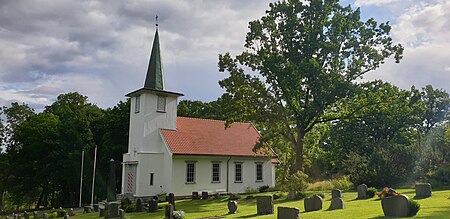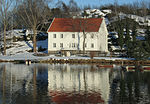Veierland Church
1905 establishments in Norway20th-century Church of Norway church buildingsChurches completed in 1905Churches in Vestfold og TelemarkFærder ... and 2 more
Long churches in NorwayWooden churches in Norway

Veierland Church (Norwegian: Veierland kirke) is a parish church of the Church of Norway in Færder Municipality in Vestfold county, Norway. It is located in the village of Veierland (on the island of Veierland). It is one of the churches for the Nøtterøy parish which is part of the Tønsberg domprosti (deanery) in the Diocese of Tunsberg. The white, wooden church was built in a long church design in 1905 using plans drawn up by an unknown architect. The church seats about 150 people.
Excerpt from the Wikipedia article Veierland Church (License: CC BY-SA 3.0, Authors, Images).Veierland Church
Vestgårdsveien, Færder
Geographical coordinates (GPS) Address External links Nearby Places Show on map
Geographical coordinates (GPS)
| Latitude | Longitude |
|---|---|
| N 59.1626103 ° | E 10.3461449 ° |
Address
Veierland kirke
Vestgårdsveien
3144 Færder
Norway
Open on Google Maps






